Food insecurity rises among SLO County families. But an alliance of groups is here to help
Thanksgiving marked the beginning of the food-centered holiday season.
While many local families enjoyed a full table with turkey, mashed potatoes and gravy, recent data shows fewer San Luis Obispo County families were able to fill their pantries, much less their holiday tables, in 2023 compared to years past.
The factors contributing to rising food insecurity in San Luis Obispo County are similar to the economic factors straining families nationwide — inflation, the rollback of pandemic-era protections and rising cost of living, among them.
“It’s just been a very hard year for many people,” said Andrea Keisler, community programs director at the SLO Food Bank. “Well, actually, a very hard two years.”
Data from United Way shows 31% of San Luis Obispo County households in 2023 did not earn enough money to pay for basic necessities, such as housing, food, transportation, health care and child care.
As the cost of living climbs, more local families will struggle to access healthy and affordable food options, some intermittently and others chronically.
“Food insecurity doesn’t happen in isolation,” Keisler said. “When we talk to people who are accessing our services, they’re not just facing food insecurity. They’re also having issues with transportation, with housing costs, medical costs, meeting their other basic needs — they’re all intertwined.”
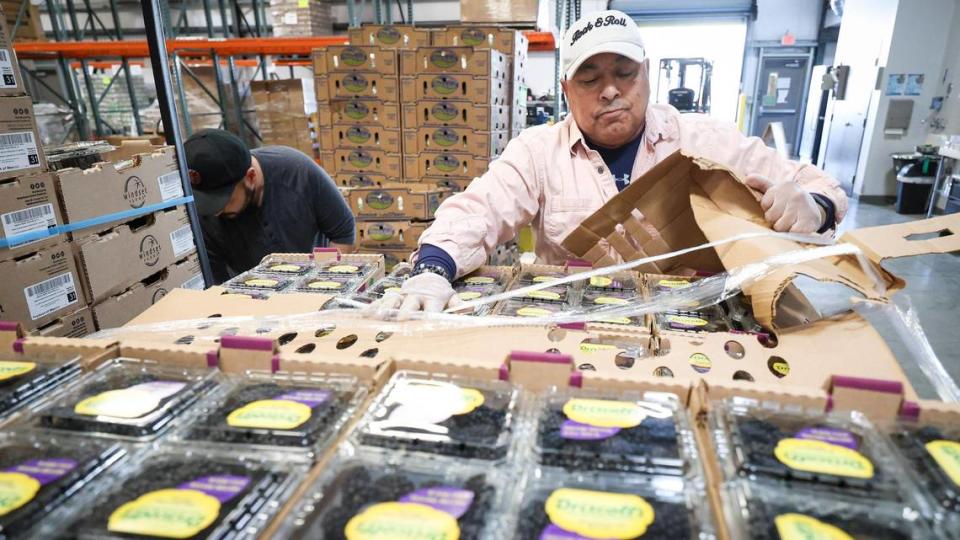
SLO County agencies, organizations come together to feed community
The SLO Food Bank is just one member of the San Luis Obispo County CalFresh Alliance, a collaborative of public agencies, nonprofits, universities, charities and other stakeholders that aims to curb food insecurity by increasing the number of families enrolled in CalFresh benefits.
The alliance also connects families with emergency food assistance through the SLO Food Bank, which distributes parcels of nutritious food at 52 sites across the county.
“We’re providing access to food, but in slightly different ways,” Keisler said.
CalFresh is the state version of the federal Supplemental Nutrition Assistance Program that gives low-income households in California financial benefits that can be used to purchase food at grocery stores, some small local retailers and farmers markets. The benefits can also be used to be seeds so people can grow their own food.
“CalFresh Alliance is doing a lot of good work in the community,” said Robb Koch, San Luis Obispo County Department of Social Services CalFresh program manager.
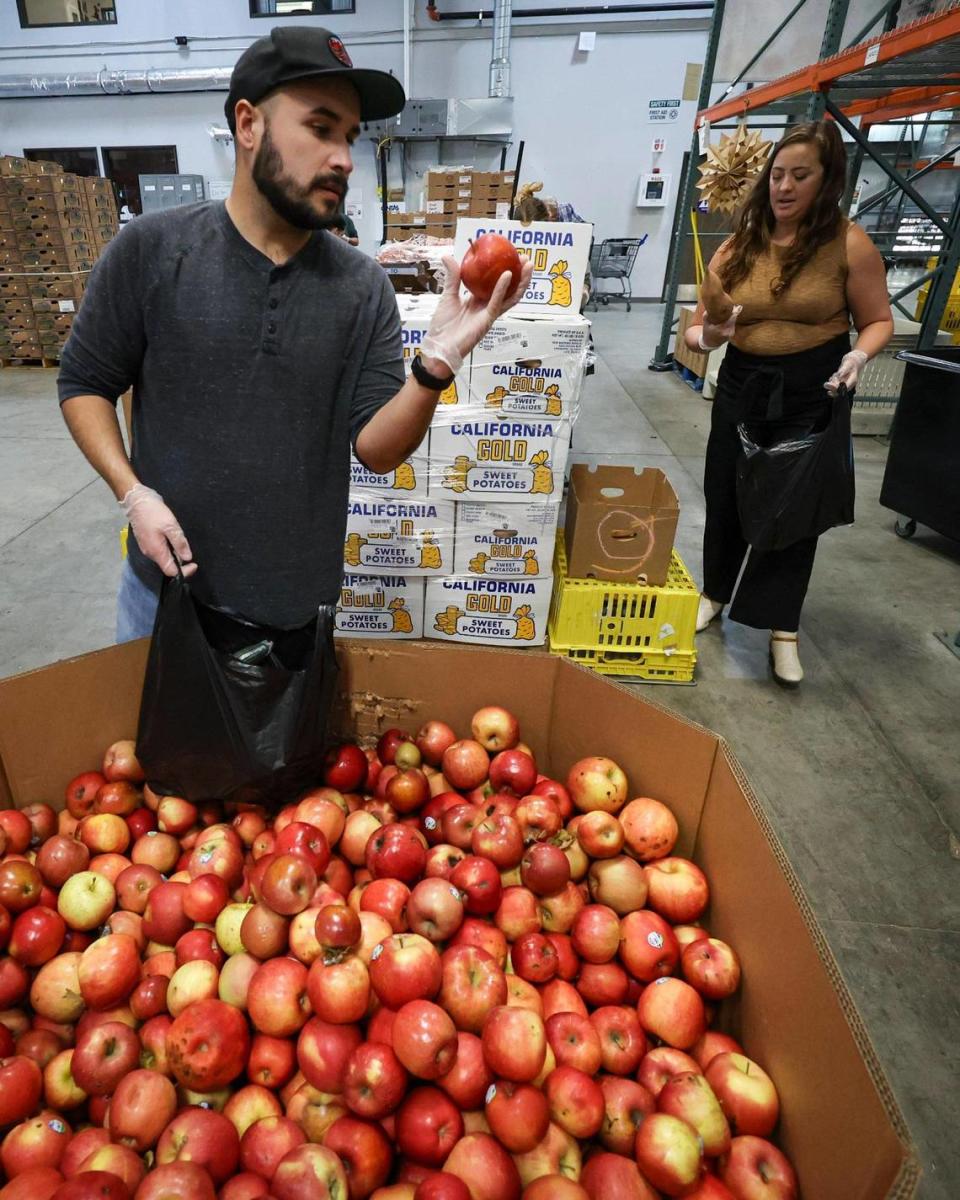
How many SLO County residents worry about having enough food?
The U.S. Department of Agriculture measures food security on a scale from high food security, meaning the household has no food access concerns or limitations, to very low food security, meaning the household has multiple examples of disrupted eating patterns or a reduction in food consumed.
Data from Feeding America showed 23,710 households, or 8.4% of households in San Luis Obispo County, were food insecure in 2021.
Of the food insecure households surveyed by Feeding America, 69% meet the income qualifications for federal food assistance benefits such as CalFresh for women, infants and children, which provides support to pregnant people and their children, and 31% of households do not.
“You don’t have to identify as food insecure or hungry to qualify for CalFresh,” said Shannon Klisch, academic coordinator with the University of California Cooperative Extension in San Luis Obispo and Santa Barbara counties. “And at the same time, you can be hungry and food insecure and still not qualify for CalFresh.”
Organizations like the SLO Food Bank try to fill the gaps for families that may be experiencing temporary or intermittent food insecurity but are ineligible for CalFresh benefits, Keisler said.
“We try to maintain programs that (are) low barrier to participation — as low barrier as possible — so that we do catch those people that might not be able to access the other programs for whatever reason,” Keisler said.
The Feeding America numbers may be the most up-to-date food insecurity statistics available for SLO County, but “this is old data,” Klisch said.
The cost of food increased nationwide, which has caused food insecurity rates to rise almost everywhere in 2023.
The SLO Food Bank and partner agencies served an average of 31,500 individuals per month in 2022, Keisler said. There has been a 14% average increase in individuals served by food bank locations in 2023.
Local CalFresh enrollment has also increased.
Today, about 16,000 households in San Luis Obispo County are enrolled in CalFresh and receive that benefit.
Comparatively, an average of 10,000 households in the county received CalFresh benefits from 2014 to early 2020, before the COVID-19 pandemic shutdowns, Koch said.
Since then, “we’ve had about a 60% caseload increase,” Koch said.
The increase in CalFresh enrollment points to growing food insecurity in SLO County but also growing awareness of CalFresh benefits for eligible families, he said.
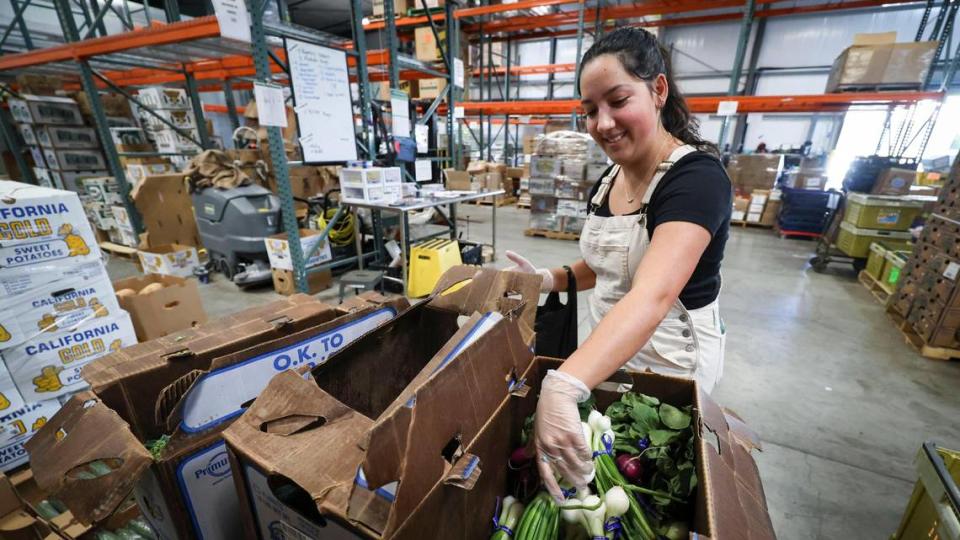
SLO County CalFresh Alliance addresses food assistance stigma
CalFresh eligibility is based on three factors: household size, household income and expenses such as rent, utilities, childcare and other factors, Koch said.
It is not based on self-reported food security or insecurity, though the goal of the CalFresh Alliance is to mitigate food insecurity in SLO County households by increasing enrollment.
Venessa Rodriguez is the CalFresh outreach manager at the SLO Food Bank, and her primary role is to get the word out about CalFresh to eligible families who may not be aware of the benefit available to them.
One of the major barriers to getting more eligible community members signed up for CalFresh is combating the stigma surrounding food assistance programs, Rodriguez said.
The stigma is in many ways related to when the federal SNAP program was distributed in the form of food stamps, Rodriguez explained, as well as other myths and misconceptions related to CalFresh benefits and immigration status.
“Speaking from the SLO Food Bank, we’ve really made it a point to really try to connect with our Latino and Hispanic speaking community,” Rodriguez said.
Many members of the Latino and Hispanic community have the added concern about whether accepting CalFresh benefits could impact the immigration status of their family members, Rodriguez said.
In reality, CalFresh benefits are open to households where citizen status is mixed, such as where the children are citizens but parents are not.
People who are undocumented but would otherwise be eligible for CalFresh can still receive food assistance through the state-run California Food Assistance Program.
“With the pandemic, a lot of people really came to the realization that food insecurity can happen to anyone,” Rodriguez said. “It opened up the conversation that (CalFresh) is not something to be ashamed of. It’s a resource. It’s there for you to use.”
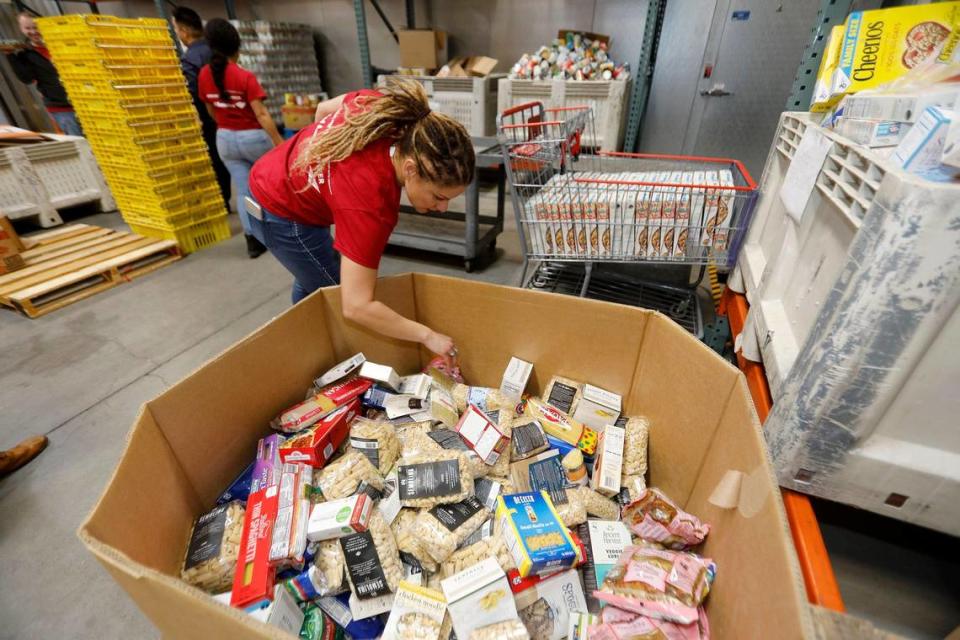
Latino, Mixteco and Black families are more likely to be food insecure in SLO County
Although food insecurity can happen to any family, the data shows stark disparities in who is more likely to be food insecure in San Luis Obispo County.
The United Way Real Cost Measure for 2023 shows households of color in San Luis Obispo County are more likely to make less money than the standard income required to afford basic needs such as food, housing, healthcare and more.
In San Luis Obispo County, 42% of Latino families reported incomes below the standard in 2023, according to United Way.
The 2021 Feeding America data, which looks at food insecurity specifically, showed 16% of Black residents and 12% of Latino or Hispanic residents in the county were food insecure.
The USDA measures communities where residents of particular census tracts have low income and low access to healthy foods.
While the USDA maps can be informative, they often are missing local context particularly for areas that are not densely populated, Klisch said.
“I think the most important thing is to know the communities that you’re serving, and know the providers that are in that community and work with them to understand what’s going on,” Klisch said.
The results of the San Luis Obispo County Public Health Department’s 2023 Health Counts survey showed most residents are able to access affordable, healthy foods locally, but the four locations that reported the lowest access to affordable healthy foods were Nipomo, Paso Robles, Grover Beach and San Miguel.
Drawing on local partnerships has been essential to reaching one of the populations that may be the most deeply impacted by food insecurity in the county: the Mexican and Latino indigenous communities.
Many of the Mexican and Latino indigenous immigrants surveyed by researchers at Cuesta College said they arrived in the county sometime in the past three years, and most speak Mixteco.
One of the most significant challenges for the Mixteco community in San Luis Obispo County is food insecurity.
Of the 325 indigenous immigrants interviewed for the study, 64% said they could not afford to buy food at least once in the past year.
“SLO County is really learning about this population that we have, so there isn’t a ton of information,” Rodriguez said.
Agencies have struggled to reach the mostly monolingual Mixteco-speaking population. This population mostly speaks Mixteco, though some also speak Spanish, the survey showed.
“It is kind of hard to bridge those gaps when you don’t have the translation services,” Rodriguez said.
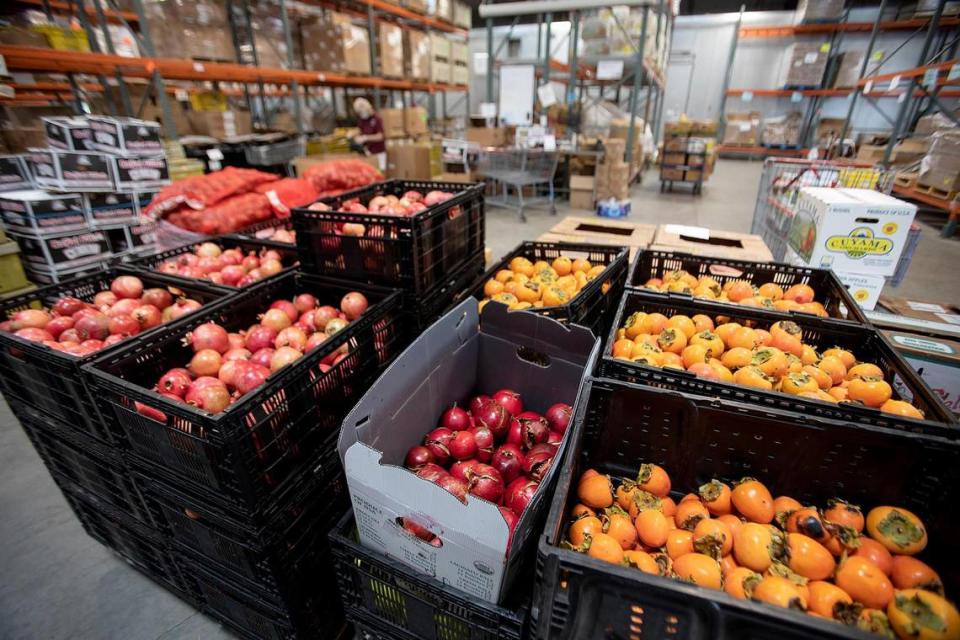
Food insecurity rises nationwide as pandemic-era protections end
A USDA study showed a significant increase in the percentage of households that reported food insecurity in 2022 compared to 2021 and 2020.
In 2022, 17 million U.S. households, or 12.8%, reported struggling to provide food for all members of the family at some point over the year. Of those, 6.8 million households, or 5.1%, reported severe food insecurity, meaning some household members ate less and “normal eating patterns were disrupted” because of limited resources, the study showed.
“Our rates have gone up quite a bit after either staying steady or even falling for many, many years,” Klisch said.
The 2022 food insecurity numbers are substantially higher than those reported in previous years. In 2021, 10.2% of households (13.5 million) reported food insecurity and in 2020 food insecurity prevalence was slightly higher at 10.5% (13.8 million).
“People are reporting changes in their food purchasing and their ability to get enough food for their families,” Klisch said, referencing new national data from the USDA on food insecurity.
Despite the widespread disruption of the COVID-19 pandemic fewer U.S. households reported severe food insecurity in 2020 and 2021 — roughly 3.8% or 5.1 million households both years.
“We had this real bizarre opportunity through COVID to see what different policies did for our nation,” Keisler said, such as the Child Tax Credit and expansion of SNAP.
“The research shows that those (policies) worked to help alleviate poverty in a really significant way,” she said.
Those federal economic benefits prevented food insecurity rates from “going through the roof” during the pandemic, Klisch said.
But now, many of those emergency programs have been discontinued, plunging many households back into food insecurity and sending more clients to the SLO Food Bank.
For example, the CalFresh emergency allotment of $95 for the highest need clients ended in March 2023, leaving many households urgently needing food.
In May, two months after the emergency allotment was discontinued, the SLO Food Bank had its highest numbers to date, Keisler said.
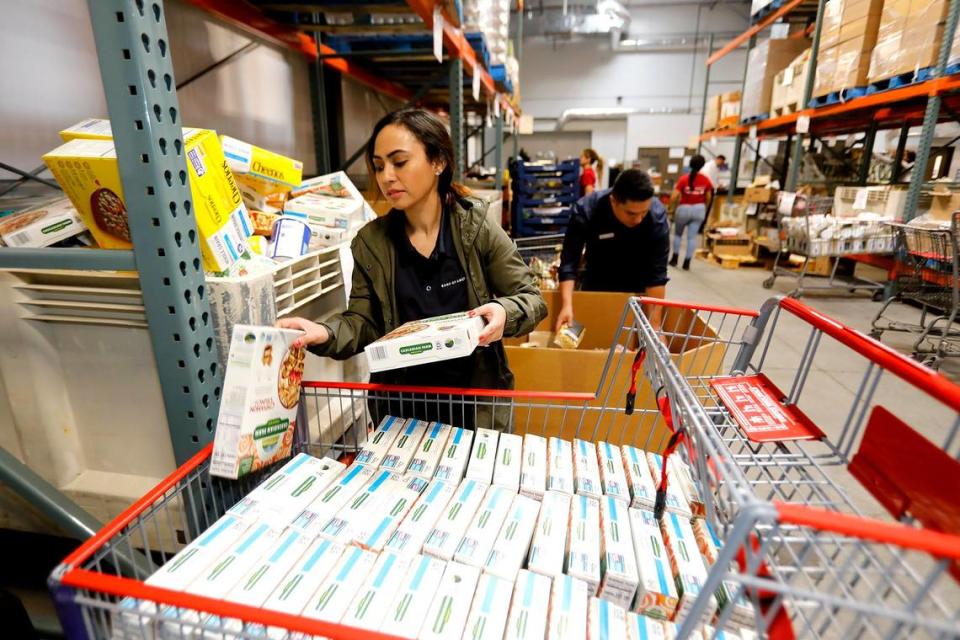
How to access food assistance in San Luis Obispo County
The SLO Food Bank distributes food directly to individuals at neighborhood sites and through their more than 80 partners throughout the county. In total, there are 65 food distributions per month at 52 locations throughout SLO County, according to the food bank website.
Income-eligible households, a measure that is self-reported at the SLO Food Bank distribution centers, can access a parcel of food that consists of fresh produce, shelf-stable items and meats. Dairy and bread items can also be picked up depending upon their availability.
Emergency food assistance through the SLO Food Bank can be paired with CalFresh benefits to help food-insecure families.
The benefit is allocated to an electronic benefits transfer card, essentially a debit card, where monthly allocations of CalFresh benefits are deposited, Koch said.
The funds don’t expire, so any money leftover is rolled over to the next month, Koch said.
CalFresh benefits are portable and can be used to purchase produce and anything with a nutrition label. Alcohol, tobacco, prescription medications and pet food cannot be purchased with CalFresh.
The county also has a deal with local farmers markets called Market Match, where CalFresh benefits can be used to purchase tokens at the farmers market manager booth which are then matched up to about $15-20 by the market — essentially doubling the spending power to buy fresh, local produce and food items.
People who are homeless, disabled or over 60 years old can use CalFresh to purchase prepared foods at a handful of participating restaurants.
Undocumented residents that are ineligible for CalFresh benefits due to their immigration status can still access financial assistance to purchase food through a similar state-run program.
The fact that people are working full time for low wages and are still hungry is not a natural phenomenon, but rather a function of the U.S. economic system, Klisch said.
“We have a lot of stigma around food stamps and CalFresh,” she said. “I think all of us can work to reduce that stigma and make it a normal thing.”

